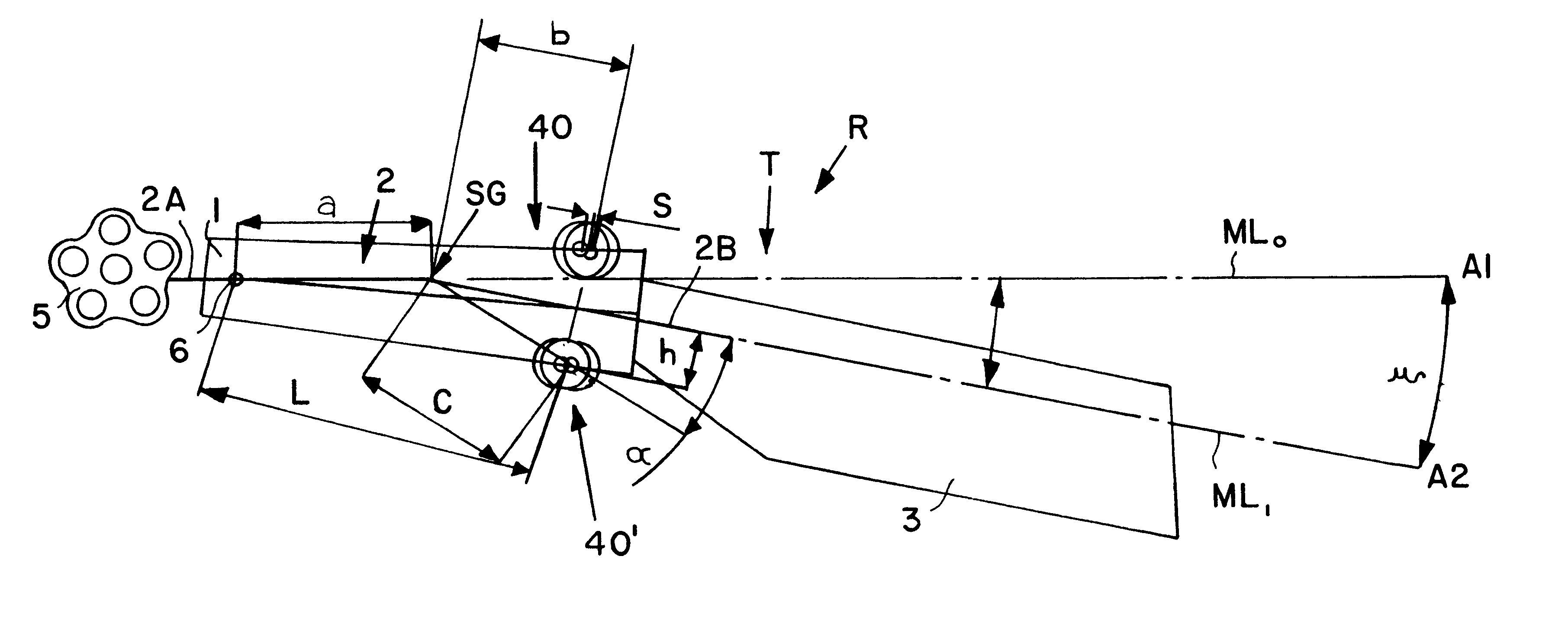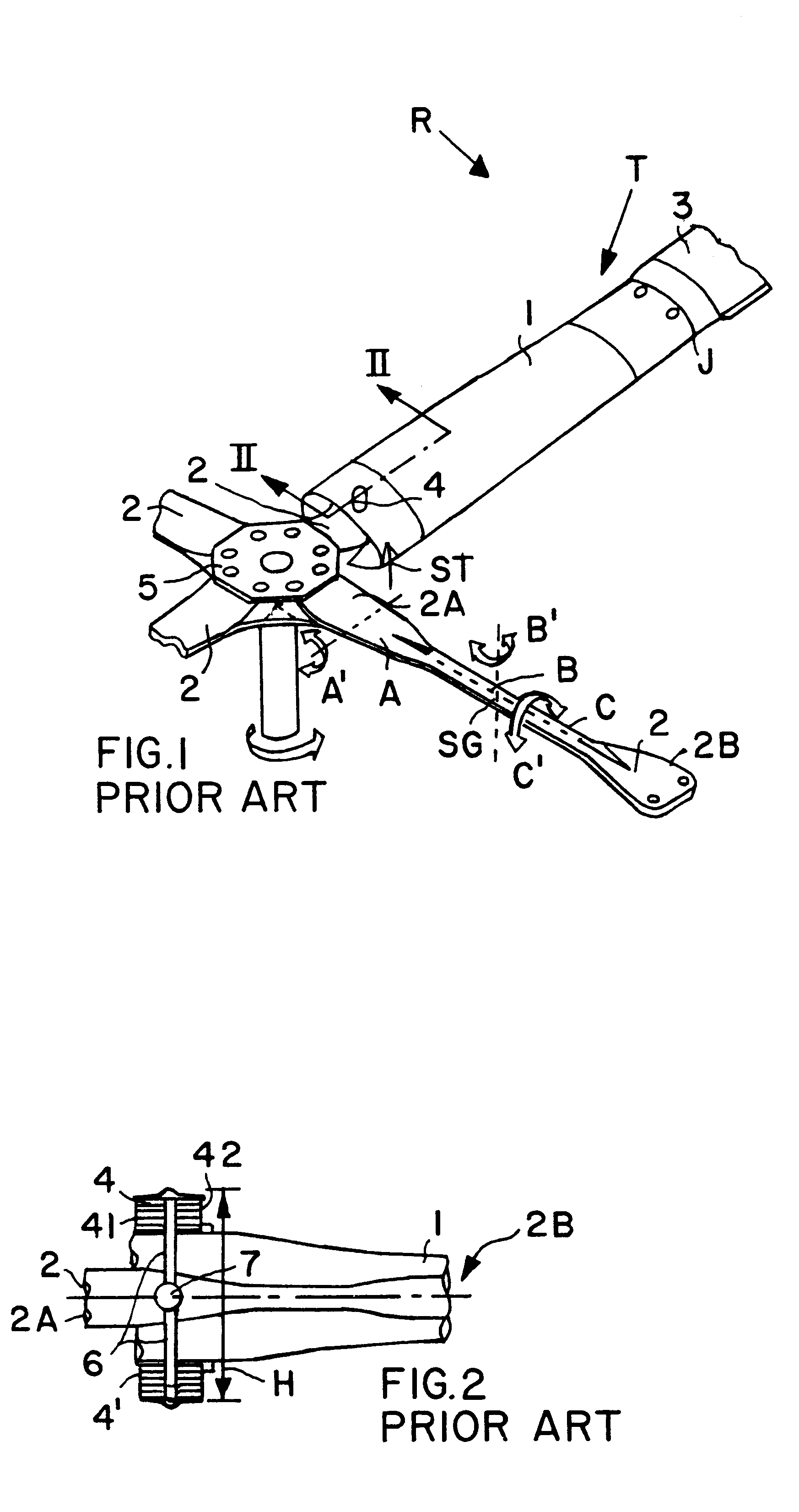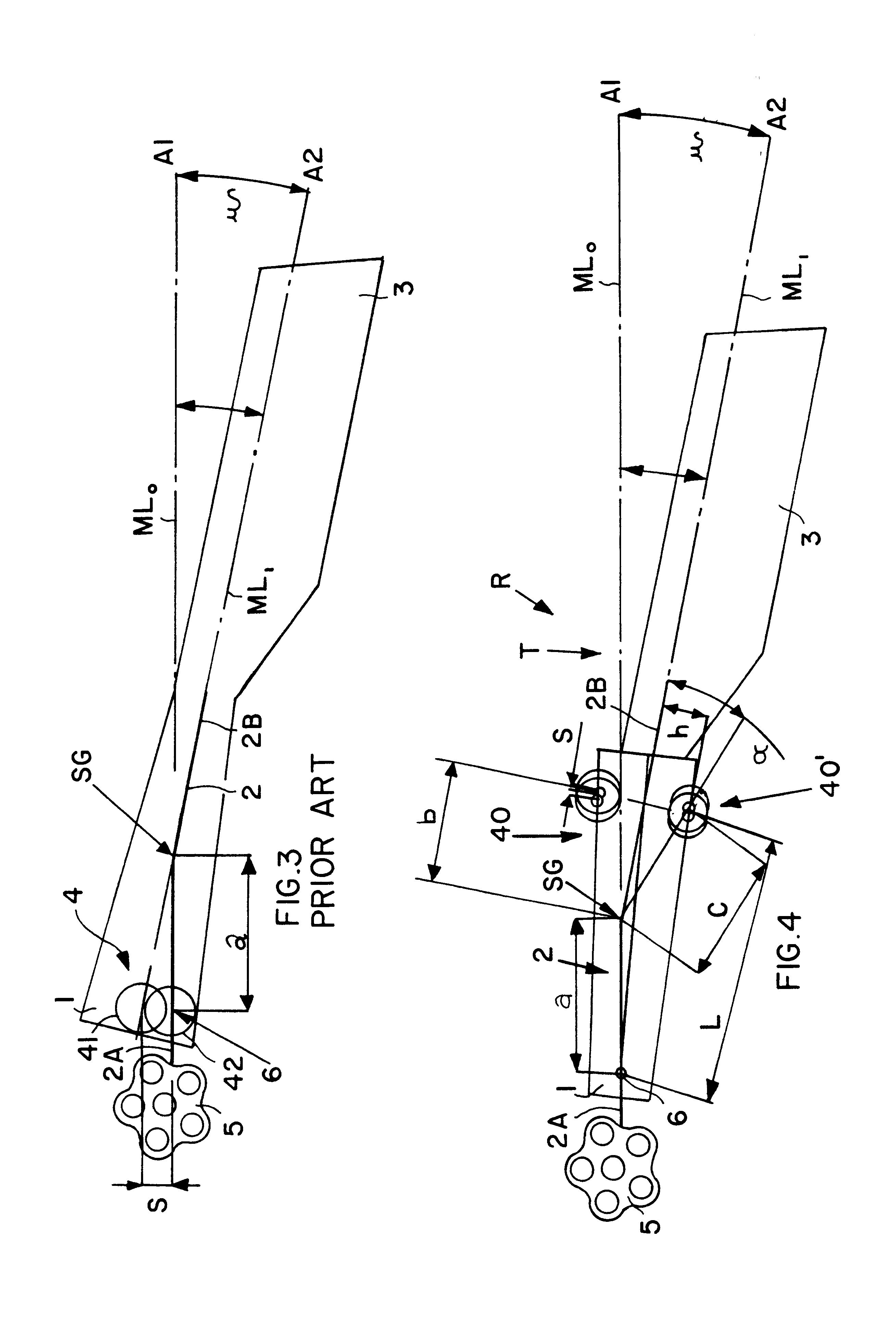Rotor blade for a bearingless rotor of a helicopter
a bearingless rotor and helicopter technology, applied in the direction of marine propulsion, vessel construction, other chemical processes, etc., can solve the problems of requiring a relatively large structural height of each overall damping element, thereby subjecting blades to high loads, and large deflection or deformation distance of the damping element layer
- Summary
- Abstract
- Description
- Claims
- Application Information
AI Technical Summary
Benefits of technology
Problems solved by technology
Method used
Image
Examples
Embodiment Construction
FIG. 1 schematically illustrates a prior art arrangement of a helicopter rotor having four rotor blades. The blades are connected to a rotor head 5, including a rotor hub and a rotor shaft or mast. The main structure of each rotor blade R includes a region or portion forming the lift-generating airfoil blade 3 as well as a flexbeam 2 extending from the airfoil blade 3 to the rotor head 5 in the lengthwise direction of the respective rotor blade R. The flexbeam 2 is typically a structural component made of a fiber composite material. The inboard end of the flexbeam 2 that is directed toward and connected to the rotor head 5 is referred to as the flexbeam root 2A. The outboard end of the flexbeam 2, i.e. the end opposite the root 2A, is referred to as the flexbeam head 2B, which is connected or transitions into the airfoil blade 3 in a transition region T.
If the transition region T is embodied as an integral connection without any seam or joint, the rotor blade R is generally referred...
PUM
 Login to View More
Login to View More Abstract
Description
Claims
Application Information
 Login to View More
Login to View More - R&D
- Intellectual Property
- Life Sciences
- Materials
- Tech Scout
- Unparalleled Data Quality
- Higher Quality Content
- 60% Fewer Hallucinations
Browse by: Latest US Patents, China's latest patents, Technical Efficacy Thesaurus, Application Domain, Technology Topic, Popular Technical Reports.
© 2025 PatSnap. All rights reserved.Legal|Privacy policy|Modern Slavery Act Transparency Statement|Sitemap|About US| Contact US: help@patsnap.com



